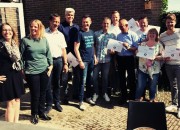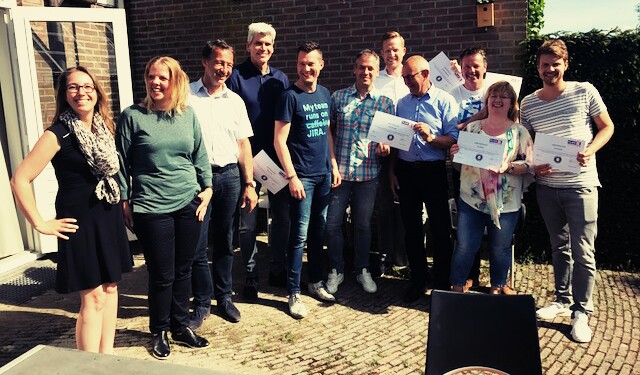Do you recognise the struggle of transforming your organisation? Where to start and what the aspects are that really make sense if you want to transform it into a high performing organisation? In this series of posts I want to address 5 principles that must be part of your organisational foundation and way of thinking. These are 5 crucial principles I’ve learned in the past few years from organisations that feel the urge to transform and are willing to make some sacrifices.
5 Crucial Principles that create the foundation of your high performing organisation:
- Flow in different forms is crucial to speed up your delivery
- How feedback loops will radically change your improvement cycle
- Strongly focus on the improvement of secondary processes
- Autonomy of teams cannot be given, it must be created
- The simplification of your products and processes will lead to faster value
Every post in this series will address concrete examples to find the principle in your organisation, an explanation why this principle matters during a transformation and finally, some practical suggestions to start today.
Flow in many shapes and different forms is crucial to speed up your delivery
You may have heard of flow before, flow as a state of mind, a magazine or a diagram to represent a certain process. There is more. If you break flow down in the view of organisational transformation, flow is about the efficiency of moving and processing units in a steady stream. A unit is a broad concept and applicable in many aspects of your organisation.
Do you want to increase the productivity in your organisation? You aim to deliver more value, for example by creating more and better IT systems? Not only must your IT department focus on more delivery. It is the total organisation that enables the value creation. You have probably improved the IT teams. They are likely already running liked high performing assembly lines, but if nothing is coming in very structured, they are doomed to fail. If your customer has a request, but it takes months before you can answer his questions, the flow in your organisation is most probably blocked.
Production via your production teams is one of the foundations of your organisation and a way to earn money. This department produces value for your customers as soon and as fast as possible. Flow is therefore crucial and bottlenecks in the production lines need to be solved. To get a better understanding of how flow is expressed in your organisation, let’s take a closer look to see some examples.
Some examples
 Flow of code to production
Flow of code to production
How long does it take to push code production? Are you aware of how the process is designed from the developer’s laptop all the way to production? This is one of the basic flows in your organisation that needs to be optimised. If the developers can push code to production quickly in minutes to an hour instead of days up to weeks, a lot of bottlenecks are already solved in this improved flow.
Continue reading


